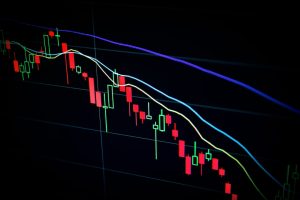Forex indicators are an essential tool for traders to analyze the market and make informed decisions. They provide visual representations of market data and help identify trends, support and resistance levels, and other crucial information. However, manually analyzing and interpreting indicators can be time-consuming and may not always yield accurate results. That’s where an EA (Expert Advisor) comes in. An EA is a piece of software that automates the trading process by using predefined trading rules. This article will explain how to turn a forex indicator into an EA.
Step 1: Define the Trading Strategy
Before converting an indicator into an EA, it’s essential to define the trading strategy. A trading strategy is a set of rules that determine when and how to enter and exit trades. The strategy should be based on the indicator’s signals and other market conditions, such as price action, volume, and news events.
For example, let’s say we want to use the Moving Average indicator to create an EA. The strategy could be to buy when the price crosses above the 50-day moving average and sell when the price crosses below it. We can also add other conditions, such as a stop loss and take profit level, to manage risk.
Step 2: Convert the Indicator into an EA
Once we have defined the trading strategy, we can start converting the indicator into an EA. The process involves coding the trading rules into the software. There are two ways to do this:
a) Write the code from scratch
b) Use an EA builder or generator
Writing the code from scratch requires programming skills and knowledge of the trading platform’s language. It’s a time-consuming process, but it provides more flexibility and customization options. On the other hand, EA builders and generators are software that allows traders to create EAs without coding. They provide a user-friendly interface and a range of pre-built modules that traders can combine to create their trading strategy.
Step 3: Test and Optimize the EA
Once we have created the EA, it’s essential to test and optimize it before using it in live trading. Testing involves backtesting the EA using historical market data to see how it performs under different market conditions. It’s crucial to ensure that the EA generates consistent profits and has a reasonable risk-reward ratio.
Optimizing the EA involves fine-tuning the parameters to improve its performance. For example, we can adjust the stop loss and take profit levels or change the time frame of the indicator. We can also test different combinations of indicators to see which one works best.
Step 4: Deploy the EA in Live Trading
After testing and optimizing the EA, we can deploy it in live trading. It’s essential to monitor the EA’s performance and make adjustments as needed. We should also have a risk management plan in place and set a maximum drawdown level to limit potential losses.
Conclusion
Converting a forex indicator into an EA can be a useful tool for traders who want to automate their trading process. The process involves defining the trading strategy, coding the rules into the software, testing and optimizing the EA, and deploying it in live trading. It’s essential to have a solid risk management plan and monitor the EA’s performance to ensure consistent profits. By following these steps, traders can turn their forex indicators into profitable EAs.





